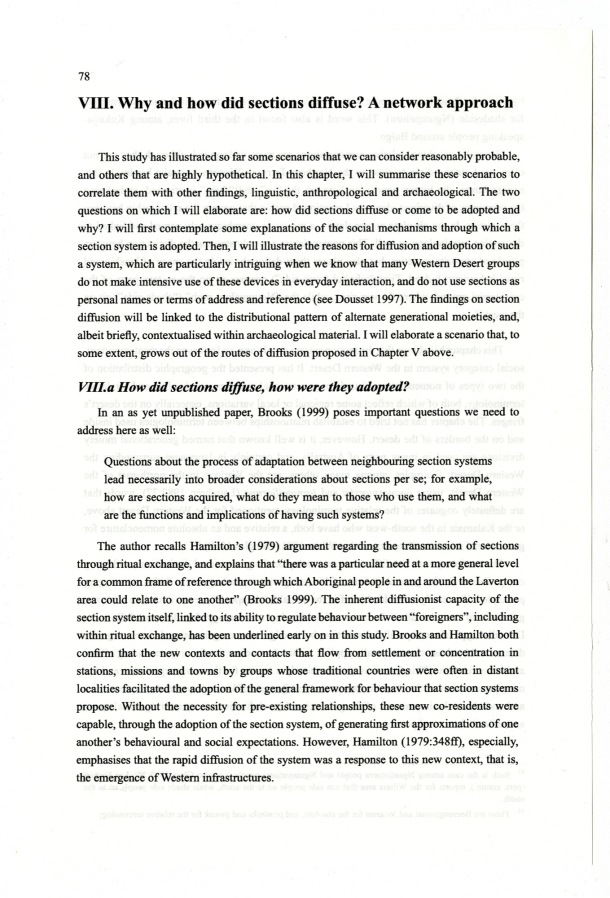|
| 
[Note: this transcription was produced by an automatic OCR engine]
78
VIII. Why and how did sections diffuse? A network approach
This study has illustrated so far some scenarios that we can consider reasonably probable,
and others that are highly hypothetical. In this chapter, I will summarise these scenarios to
correlate them with other findings, linguistic, anthropological and archaeological. The two
questions on which I will elaborate are: how did sections diffuse or come to be adopted and
why? I will first contemplate some explanations of the social mechanisms through which a
section system is adopted. Then, I will illustrate the reasons for diffusion and adoption of such
a system, which are particularly intriguing when we know that many Western Desert groups
do not make intensive use of these devices in everyday interaction, and do not use sections as
personal names or terms of address and reference see Dousset 1997. The findings on section
diffusion will be linked to the distributional pattern of alternate generational moieties, and,
albeit briefly, contextualised within archaeological material. I will elaborate a scenario that, to
some extent, grows out of the routes ofdifiusion proposed in Chapter V above.
VTII.a How did sections diffuse, how were they adopted?
In an as yet unpublished paper, Brooks 1999 poses important questions we need to
address here as well:
Questions about the process of adaptation between neighbouring section systems
lead necessarily into broader considerations about sections per se; for example,
how are sections acquired, what do they mean to those who use them, and what
are the functions and implications of having such systems?
The author recalls Hamilton’s 1979 argument regarding the transmission of sections
through ritual exchange, and explains that “there was a particular need at a more general level
for a common frame of reference through which Aboriginal people in and around the Laverton
area could relate to one another” Brooks 1999. The inherent diflirsionist capacity of the
section system itself, linked to its ability to regulate behaviour between “foreigners”, including
within ritual exchange, has been underlined early on in this study. Brooks and Hamilton both
confirm that the new contexts and contacts that flow from settlement or concentration in
stations, missions and towns by groups whose traditional countries were ofien in distant
localities facilitated the adoption of the general fiamework for behaviour that section systems
propose. Without the necessity for pre-existing relationships, these new co-residents were
capable, through the adoption of the section system, of generating first approximations of one
another’s behavioural and social expectations. However, Hamilton 1979:348fl, especially,
emphasises that the rapid diffusion of the system was a response to this new context, that is,
the emergence of Western infrastructures.
|